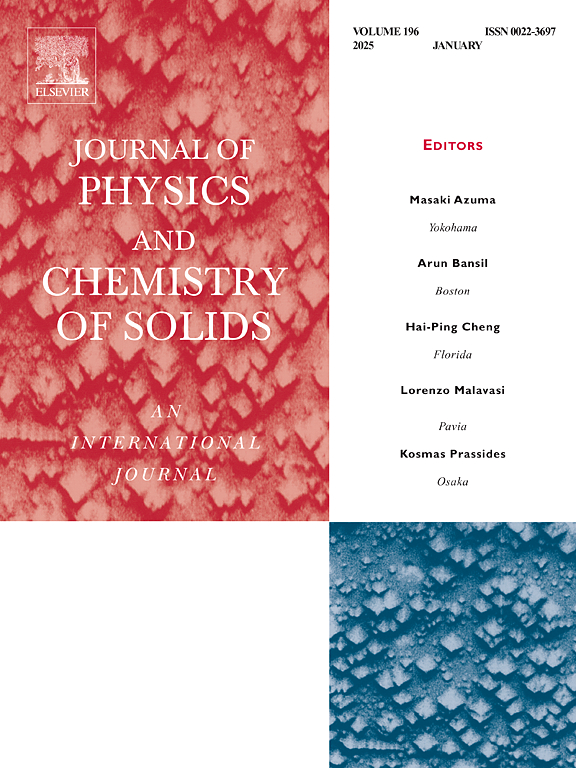高温隧道结构Na0.54MnO2纳米棒:水钠离子电池正极材料
IF 4.9
3区 材料科学
Q2 CHEMISTRY, MULTIDISCIPLINARY
引用次数: 0
摘要
采用硝酸甘氨酸法合成了Na0.54MnO2粉体,并在950℃下退火。其晶体结构类似于棒状的三维隧道,平均晶体宽度为130 nm,长度在微米范围内。在NaNO3溶液中测试了Na0.54MnO2基电极的电化学性能。在电位循环过程中,Na+离子的插入/脱嵌过程保持可逆,具有良好的稳定性。当电流密度为1000、2000和5000 mA g−1时,计算出的比容量分别为72.6、66.8和57.5 mAh g−1。Na0.54MnO2具有易于嵌入/脱嵌的良好形貌和良好的电化学性能,是一种很有前途的水性钠离子电池正极材料。本文章由计算机程序翻译,如有差异,请以英文原文为准。
Tunnel structured Na0.54MnO2 nanorods synthesized at high-temperature: Cathode material for aqueous Na-ion batteries
The Na0.54MnO2 powder is synthesized by the glycine nitrate method followed by annealing at 950 °C. Its crystal structure resembles a 3d tunnel with rod-like shapes, with an average crystallite width of 130 nm and a length in the micron range. The electrochemical performance of the Na0.54MnO2 - based electrode is tested in a NaNO3 solution. During potential cycling, the Na+ ions intercalation/deintercalation processes remain reversible, indicating good stability. For the current densities of 1000, 2000, and 5000 mA g−1, the calculated specific capacities are 72.6, 66.8, and 57.5 mAh g−1, respectively. Due to its suitable morphology for easy Na+ ions intercalation/deintercalation and good electrochemical performance, Na0.54MnO2 is a promising cathode material for aqueous Na-ion batteries.
求助全文
通过发布文献求助,成功后即可免费获取论文全文。
去求助
来源期刊
CiteScore
7.80
自引率
2.50%
发文量
605
审稿时长
40 days
期刊介绍:
The Journal of Physics and Chemistry of Solids is a well-established international medium for publication of archival research in condensed matter and materials sciences. Areas of interest broadly include experimental and theoretical research on electronic, magnetic, spectroscopic and structural properties as well as the statistical mechanics and thermodynamics of materials. The focus is on gaining physical and chemical insight into the properties and potential applications of condensed matter systems.
Within the broad scope of the journal, beyond regular contributions, the editors have identified submissions in the following areas of physics and chemistry of solids to be of special current interest to the journal:
Low-dimensional systems
Exotic states of quantum electron matter including topological phases
Energy conversion and storage
Interfaces, nanoparticles and catalysts.

 求助内容:
求助内容: 应助结果提醒方式:
应助结果提醒方式:


